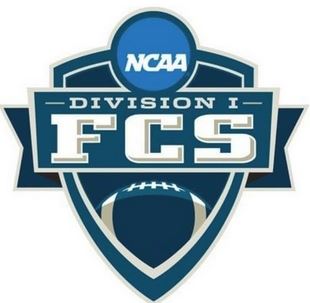Podcast: Play in new window | Download
Subscribe: RSS
It’s all about the money in college athletics today – at every level.
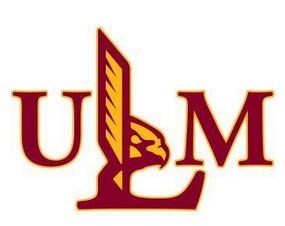
Supporters of the athletics programs at, let’s say, UL-Monroe and Nicholls State in Thibodaux love to get a chance to play LSU in any particular sport. They may even win a game in some sports against the Tigers every now and then.
However, Louisiana college athletics programs not named LSU have never had the financial wherewithal to compete annually at the turnstiles or with the income statements with Louisiana’s flagship university.
The financial disparity will get wider and more expensive in the years to come.
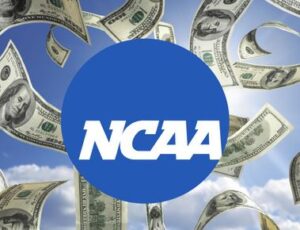
With the NCAA’s granting permission to pay college athletes via the Name, Image, and Likeness (NIL) rules, the talent gap between LSU and all other schools in Louisiana in athletics will necessarily widen. LSU’s athletic supporters will do whatever is necessary to financially keep up with Alabama, Georgia, and other top college athletic programs around the country.
If the average NIL pay package for an SEC football player is nearly $500,000 per year, where will that money come from? LSU (like Bama, Georgia, and the other top brands) is already busy trying to tap their zealous fans for the extra dough.
Smaller state schools such as Louisiana Tech (FBS Conference USA) and Southeastern Louisiana (FCS Southland Conference) are left with (financially speaking, of course) the crumbs. The Bulldogs and Lions simply do not have the number of active financial supporters who are willing to pony-up enough money to pay players at the elite level of LSU and other major schools.
Most of the colleges in Louisiana not-named-LSU already struggle to attract enough paying customers to their athletic contests and need their athletic backers to help keep their programs solvent. And that was BEFORE this new “pay-for-play” NIL game started to gain steam in the past two years.
Just how much money are we talking about?

A recent report indicated that the list below represents the estimated cost to sign top high school and transfer college football players to play at major schools this fall – for one year:
Quarterbacks: $500,000 – $800,000
Running backs: $200,000 – $300,000
Wide Receivers: $75,000 – $300,000
Offensive linemen: $350,000 – $500,000
Defensive linemen: $250,000 – $600,000
Linebackers: $100,000 – $300,000
Defensive backs: $120,000 – $225,000
With one quarterback, two running backs, three receivers, and five blocking linemen, the cost of an upper tier college football offense may range anywhere from a low of $2,525,000 per year all the way up to $4,800,000.
For the defense, a top quality starting unit (four linemen, three linebackers, and four defensive backs) could cost from a low of $1,780,000 to an estimated $4,200,000.
Once you add a top-rated place kicker and a punter, a major college football team could spend anywhere from $5 million to $10 million per season just for their 22 starting players and two key special teamers. It likely will cost double that dollar amount in order to “buy” the remainder of a major college football roster.
That would add up to about $10 to $20 million per year if your favorite college football team wants to keep playing with the big boys.

With an average ticket price of (let’s say) $100, LSU collects about $10 million per home game in its 102,000 seat Tiger Stadium from just the ticket revenue alone. With seven home games and additional revenue derived from concessions and merchandise sales, the LSU football team’s annual home revenue in Baton Rouge may approach $100 million per year.
If the coaching staff costs $20 million and the team costs an additional $20 million, LSU’s football revenues should be able to cover these expenses.
The positive news for today’s highly recruited athletes is the possibility that they could earn $1 to $2 million over their four year college football career. If the player is able to hang onto $1 million and invest it at a 5% annual interest rate, the player would be able to receive $50,000 per year from the interest for the rest of his life.

The numbers simply don’t add up for the smaller schools
Where will the smaller revenue football programs in Louisiana and other states find new sources of revenue needed to compete for top athletes? The money simply isn’t there.

As I covered a few months ago, the best thing smaller athletic programs can offer to a player is playing time. If you’re a late-blooming offensive lineman who goes relatively unnoticed by LSU, you might sign with a smaller FBS school such as UL-Monroe. If the coach believes you are good enough, you may get the chance to play a significant role on the field as a freshman.
Once this young offensive lineman blossoms into a first team All-Sunbelt Conference selection after his sophomore year, the phone is going to ring. The LSU’s of the world will find that player and make “an offer he can’t refuse” to transfer away from UL-Monroe.

The Warhawks top football players will become easy targets as higher paying offers will be made by the wealthiest football schools. If the goal at ULM is to win the Sunbelt football championship, they must work even harder (and get luckier) to find players who are exceptional high school and junior college players willing to come play for peanuts.
Good luck with that.
In Texas, Stephen F. Austin State University just ended its pursuit of major college football
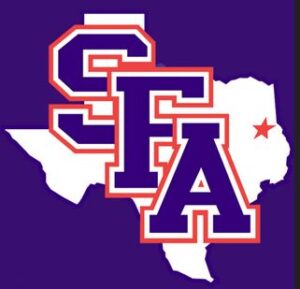
The Lumberjacks of Stephen F. Austin State University in Nacogdoches, Texas were longtime members of the FCS Southland Conference. Three years ago, the Jacks joined the far-flung Western Athletic Conference with the intent of taking their football program into the upper tier FBS division within a few years.
The reconstituted WAC was a bit wobbly when it came to football. Several WAC member schools do not even have a football program.
Nonetheless, the football playing schools within the Western Athletic Conference (SFA, Abilene Christian, Utah Tech, Southern Utah, and Tarleton State) partnered with four football-playing members from the Atlantic Sun Conference (Austin Peay, Eastern Kentucky, Central Arkansas, and North Alabama) to play football against each other.
In late 2022, this group of football playing schools announced a plan to form a football-only conference beginning with the 2023 football season. A few media reports indicated that the unstated goal of this new United Athletic Conference (UAC) was to move up to become an FBS conference with two years. All other sports would remain in the WAC or Atlantic Sun.
For Stephen F. Austin State University, the costs of travel in football and the other WAC sports significantly increased due to the distances between these institutions. Home attendance lagged after SFA stopped playing its traditional and more familiar regional foes from the Southland Conference.
In late May, 2024, SFA made a surprising announcement. The Lumberjacks have exited the WAC and rejoined the Southland Conference once again starting this fall.
SFA’s Director of Athletics, Michael McBroom, said a few weeks ago, “This affiliation puts us in an incredibly competitive and historic athletic community, aligns us with regional peers in Texas and Louisiana and allows us a greater opportunity to engage with our alumni, fans and prospective students across the entire region.” He added, “This was an easy decision for us in that the SLC offered us an opportunity to boldly move forward with confidence and excitement.”
Translation – SFA was probably losing its shirt in travel expenses, reduced revenues, and finding quality recruits.
With 12,000 students, Stephen F. Austin State University is not a small college. The school’s decision to abandon the WAC and the football-only UAC seems like a very rational decision. Students and alumni will benefit from playing regional rivals which are generally located within a half-day drive from Nacogdoches.

By returning to the FCS Southland Conference in football, SFA will have the opportunity to play for national championships in the FCS group. If the Jacks had remained in the United Athletic Conference in football and eventually joined the upper division FBS, the school’s modest athletics budget would not be able to compete against established FBS powers such as the University of Texas and Texas A&M.
All things considered, this seems like a very smart decision by SFA.
Are you paying attention, UL-Monroe and Louisiana Tech?

Nobody asked me, but I’ll throw out a couple of ideas which might be positive for both of these north Louisiana schools separated by just 30 miles via I-20.
1. The ultimate “win/win” would be for Louisiana Tech to leave Conference USA and join the Sunbelt Conference soon.
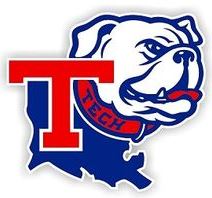
That would immediately create more fan interest as games would be played against geographic rival UL-Monroe (30 miles away) and, to a lesser extent, UL-Lafayette (185 miles away). The Sunbelt Conference makes more geographic sense for Louisiana Tech. The school’s long-time major athletics supporters bankrolled the Bulldogs’ move into the FBS more than 30 years ago. Unfortunately, the money may have been linked to an unspoken stipulation that the school would avoid playing in the same conference with rival UL-Monroe.
2. UL-Monroe makes its own decision to return to the FCS while cutting a unique deal allowing Louisiana Tech to take its place in the Sunbelt Conference.
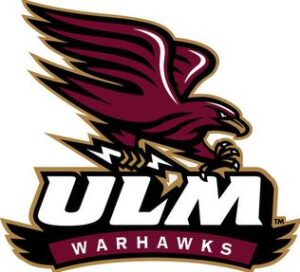
ULM won the small college national championship in football in 1987 as a member of the Southland Conference.
Upon making the decision to move-up into the NCAA’s FBS upper tier in 1994, ULM initially competed as an independent. In 2001, the Warhawks were admitted into the Sunbelt Conference. While ULM has, at times, competed well in the Sunbelt Conference, the Warhawks generally finish in the lower half of the league by season’s end in most major sports.
After 30 years at the FBS level, the Warhawks have played in just one post-season football bowl game (the 2012 Independence Bowl).
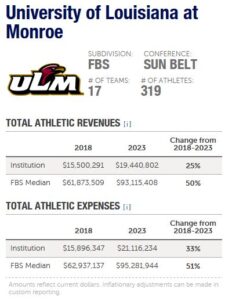
UL-Monroe is ranked near the bottom in athletics revenues in the NCAA’s FBS (major college) group. The most recent five-year reporting period showed the Warhawks total athletics revenues of $19.4 million in 2023 were $73 million below the midpoint of the top schools. After 30 years in the FBS division, ULM still remains near the bottom of 133 upper-tier college athletics group.
Despite the prestige of playing tougher opponents for the past 30 years, ULM’s sports fans and financial supporters want their teams to compete for championships.
With more money needed every season to pay NIL cash to athletes in major sports, it might be the right time for ULM’s to consider making the same move which Stephen F. Austin State University did beginning this fall.
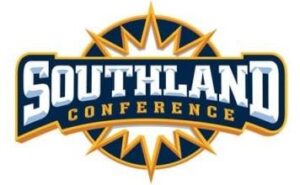
If ULM were to agree to exit the Sunbelt Conference and follow SFA into the FCS Southland Conference, Louisiana Tech could, perhaps, take the Warhawks’ place in the Sunbelt Conference.
For Louisiana Tech, leaving Conference USA for the Sunbelt Conference would be a positive move to cut travel costs and boost fan interest. By adding regional rivals such as UL-Lafayette and Southern Miss, the Bulldogs would leave behind lengthy road trips to West Virginia (Marshall University) and Norfolk, Virginia (Old Dominion).
For ULM, a return to the FCS and the Southland Conference might be a difficult reality pill to swallow. However, the Warhawks fans would have a better chance to see their team competing for championships in several sports once again.
Could a “win/win” negotiation emerge between these two North Louisiana competitors?

If ULM were to step down to the FCS and help Louisiana Tech take their place in the Sunbelt Conference at some point, there must be an agreement between these two rivals to schedule a series of home and home football, basketball, and baseball games against each other for at least the next decade.
Both the Warhawks and Bulldogs would likely draw their biggest home crowds in every sport under such an arrangement. An entire generation of fans has not seen these two schools square off on the football field after the last game was played in the year 2000.
Today’s rapidly changing economic playing field in major college athletics might soon force these two stubborn north Louisiana schools to come to their senses and resume a financially beneficial regional athletics rivalry soon.

